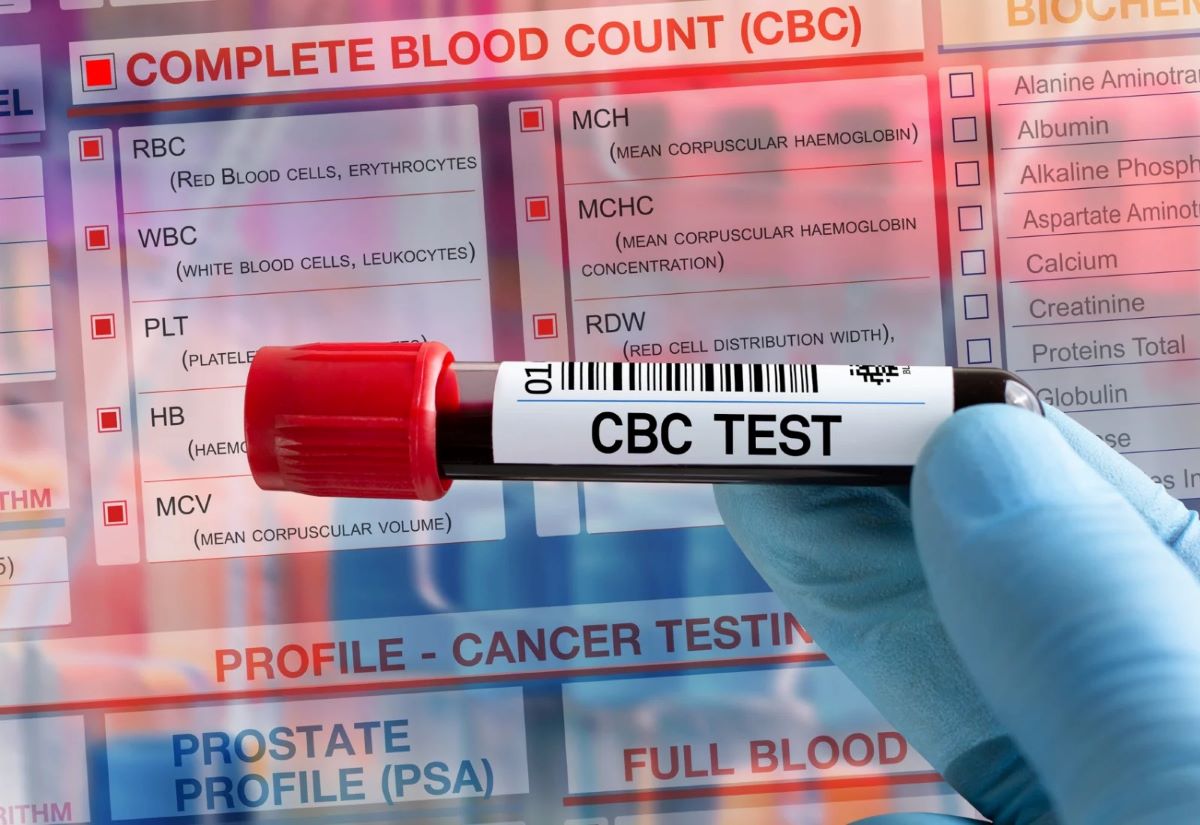Home>Finance>How Much Does A Life Flight Cost Without Insurance?


Finance
How Much Does A Life Flight Cost Without Insurance?
Published: November 16, 2023
Find out how much a life flight costs without insurance and explore financing options with our comprehensive guide on medical finance.
(Many of the links in this article redirect to a specific reviewed product. Your purchase of these products through affiliate links helps to generate commission for LiveWell, at no extra cost. Learn more)
Table of Contents
Introduction
Life is unpredictable, and emergencies can strike at any moment. In situations where immediate medical attention is crucial, life flight services have become a vital and often life-saving resource. Whether it’s a serious injury, a critical illness, or a medical condition that requires specialized care, life flights are designed to swiftly transport patients from the scene of an emergency or a local hospital to a higher-level medical facility.
However, one significant concern for many individuals is the cost of life flight services, especially when insurance coverage is not available. Without the safety net of insurance, the financial burden of a life flight can be overwhelming for patients and their families. It’s important to understand the factors that influence the cost of life flight services and explore alternative options for financing.
In this article, we will delve into the world of life flight services, examining the importance of these services, factors affecting costs, average costs without insurance, additional expenses to consider, and options for financing life flight services. By gaining a better understanding of these factors, individuals can be better prepared for unexpected situations and make informed decisions when it comes to their healthcare.
Importance of Life Flight Services
Life flight services play a crucial role in the healthcare ecosystem by providing rapid transportation for critically ill or injured patients. These specialized air ambulances are equipped with advanced medical equipment and staffed by highly trained professionals, including pilots, doctors, nurses, and paramedics. Here are some key reasons highlighting the importance of life flight services:
- Time-sensitive emergencies: In life-threatening situations, time is of the essence. Life flight services enable patients to reach specialized medical facilities quickly, bypassing traffic and other obstacles that ground transportation may face. This rapid response can significantly improve the chances of survival, especially in cases such as heart attacks, strokes, and severe trauma.
- Access to specialized facilities: Many small towns and rural areas may not have certain types of medical facilities or specialized treatments available. Life flights bridge this gap by providing transport to larger hospitals or trauma centers that offer the necessary resources and expertise to treat specific conditions or injuries. This ensures that patients receive the best possible care, regardless of their geographical location.
- Medical expertise on board: Life flight crews are comprised of skilled medical professionals who are trained in providing emergency care, stabilizing patients, and managing critical conditions during transportation. Having access to these experts during the flight can make a significant difference in the patient’s outcome, as they can administer life-saving treatments, monitor vital signs, and adjust medical interventions as needed.
- Remote and difficult terrain: Life flight services are particularly essential in areas with challenging terrains, such as mountains, deserts, or islands. These locations may be inaccessible by road or take an extended amount of time to reach via ground transportation. Air ambulances can quickly traverse such obstacles and bring patients to medical facilities without delay.
Overall, life flight services provide a critical link in the emergency medical system, ensuring that patients receive timely and specialized care when time is of the essence. Their ability to rapidly transport patients, access specialized facilities, and provide medical expertise during the flight can make a significant impact on patient outcomes and survival rates.
Factors Affecting the Cost of Life Flight Services without Insurance
The cost of life flight services without insurance can vary significantly depending on several factors. Understanding these factors can help individuals better comprehend the pricing structure and potential expenses associated with air ambulance transportation. Here are the key factors that affect the cost of life flight services without insurance:
- Distance: The distance to be covered during the life flight is a significant factor determining the cost. Longer distances require more fuel and result in increased expenses for the operator, which can be reflected in the overall price of the service.
- Level of care required: The level of medical care needed during the life flight can impact the cost. Patients requiring critical care interventions, advanced life support, or specialized equipment may incur higher expenses due to the additional resources and expertise required to manage their condition during the flight.
- Time and duration: The duration of the life flight, including any waiting time on the ground, can impact the cost. Longer flights may incur additional charges, including pilot and crew time, maintenance costs, and fuel consumption.
- Type of aircraft: The type of aircraft used for the life flight can influence the cost. Different aircraft have varying capabilities and cost structures, ranging from helicopters to fixed-wing planes. Helicopters are generally more expensive to operate and may be required for shorter distances or emergencies in areas with limited landing options.
- Geographical factors: Geographic considerations, such as challenging terrain, remote locations, or adverse weather conditions, can impact the cost of life flight services. These factors may require specialized equipment, additional fuel, and skilled pilots, which contribute to higher expenses.
- Additional medical services: In some cases, additional medical services may be required during the life flight, such as mobile intensive care units or specialized medical teams. These supplementary services, if necessary, can increase the overall cost of the transportation.
It’s important to note that the cost of life flight services without insurance can be substantial, as these services involve not only the transportation itself but also the expertise of the medical team, the advanced equipment onboard, and the operational costs associated with maintaining an air ambulance service. Understanding the factors influencing the cost can provide individuals with a clearer picture of what to expect when it comes to financing life flight services without insurance.
Average Costs of Life Flight Services
The cost of life flight services can vary significantly depending on several factors, as mentioned earlier. The absence of insurance coverage can further compound the expenses. While it is challenging to provide an exact figure for the average cost of life flight services without insurance, we can provide a general overview to give you an idea of what to expect.
On average, the cost of a life flight can range from $15,000 to $30,000 for a single flight. However, it is essential to note that these figures are approximate and can be influenced by various factors such as distance, level of care, aircraft type, and geographical considerations.
Shorter distance flights, such as within the same state or region, can generally range from $15,000 to $20,000. On the other hand, longer-distance flights that cover several hundred miles or interstate transportation can cost between $25,000 and $30,000.
It is crucial to keep in mind that these figures are for the base cost of the life flight service and do not include other potential charges, such as additional medical services or ground ambulance transportation to and from the aircraft.
Moreover, it’s important to note that these figures represent the average cost without insurance coverage. When insurance is available, the costs may be significantly reduced based on the negotiated rates between the insurance provider and the air ambulance company.
It’s also worth mentioning that costs can vary across different regions and service providers. Therefore, it is advisable to consult with air ambulance companies directly or investigate the local market to obtain more accurate pricing information specific to your location.
To alleviate the financial burden of life flight services, it’s essential to explore alternative options for financing, which will be discussed in the next section.
Additional Expenses to Consider
When considering the cost of life flight services without insurance, it’s important to be aware of potential additional expenses that may arise. These expenses can further add to the overall financial burden. Here are some additional costs to consider:
- Ground transportation: In many cases, ground transportation is needed to transport the patient to and from the aircraft. This can include an ambulance ride from the scene of the emergency or a local hospital to the designated landing site, as well as transportation from the receiving medical facility to the patient’s final destination. These ground transportation costs can vary depending on the distance and location.
- Medical services: In certain situations, additional medical services may be required alongside the life flight. This could include specialized medical teams, mobile intensive care units, or specific medical procedures. These services can result in additional charges that need to be considered when calculating the overall cost.
- Landing and facility fees: Air ambulance companies may charge landing fees at both the departure and destination locations. Additionally, there may be facility fees at the receiving medical facility that cover the use of their resources and facilities for the patient’s care.
- Insurance company disputes: Even if you have insurance coverage, disputes between your insurance company and the air ambulance provider can arise, leading to potential out-of-pocket costs. It is important to be prepared for the possibility of navigating insurance claims or potential coverage limitations.
- Membership programs: Some air ambulance companies offer membership programs that provide reduced costs for life flight services. These programs usually require an annual fee and can be beneficial for those who live in areas with limited coverage or frequent medical needs. It’s worth considering whether membership in such a program would be advantageous for your circumstances.
It’s crucial to thoroughly research and discuss these potential additional expenses with air ambulance providers to ensure you have a comprehensive understanding of the total cost involved. Being aware of these factors can help you plan and budget accordingly, reducing any financial surprises that may arise.
Options for Financing Life Flight Services without Insurance
When faced with the high cost of life flight services without insurance, it’s important to explore alternative options for financing to help alleviate the financial burden. Here are some potential avenues to consider:
- Payment plans: Many air ambulance companies offer flexible payment plans that allow you to spread out the cost of the life flight over a specified period. This can help make the payments more manageable, allowing you to pay off the expenses gradually.
- Healthcare financing: Healthcare financing options, such as medical loans or credit cards, can provide a way to cover the upfront costs of the life flight services. These financing options typically offer competitive interest rates and repayment terms tailored to your financial situation.
- Crowdfunding: Online crowdfunding platforms can be a powerful tool to raise funds for medical expenses, including life flight services. You can share your story and request financial support from friends, family, and even strangers who are willing to help in times of need.
- Medical assistance programs: Some organizations and charities provide financial assistance or scholarships for medical transportation services. Research these programs to determine if you qualify for any assistance based on financial need or specific medical conditions.
- Negotiate with the provider: In certain cases, you may be able to negotiate the cost of the life flight services directly with the air ambulance provider. They may be willing to offer a discounted rate or work out a reduced payment plan based on your financial situation.
- Seek financial aid: Depending on your circumstances, you may be eligible for financial aid through government programs, non-profit organizations, or local community resources. Explore options for financial assistance in your area to see if any resources are available.
- Review insurance options: While insurance coverage may not be available at the time of the life flight, it is important to review your insurance options for future emergencies. Consider obtaining comprehensive health insurance or supplemental plans that include coverage for air ambulance services.
Each situation is unique, and the best financing option will depend on your specific circumstances. It is crucial to communicate openly with the air ambulance company, explore different avenues, and seek professional financial advice if needed to make informed decisions about financing life flight services without insurance.
Remember, the most important priority in an emergency is to ensure timely and appropriate medical care. While the financial aspect is undoubtedly stressful, there are resources and options available to help navigate the costs and ensure the best possible outcome for you or your loved one.
Conclusion
Life flight services are a critical component of emergency medical care, providing rapid transport for patients in need of specialized treatment. However, the cost of life flight services without insurance can be substantial, potentially placing a significant financial burden on individuals and their families.
Understanding the factors that influence the cost of life flight services, such as distance, level of care, and aircraft type, is important when budgeting and planning for unexpected medical emergencies. It’s crucial to consider additional expenses that may arise, including ground transportation and facility fees, which can further add to the overall cost.
While navigating the financial challenges associated with life flight services without insurance can be daunting, there are options for financing available. Payment plans, healthcare financing, crowdfunding, and seeking assistance from charitable organizations or local resources can help alleviate the financial strain.
It’s important to research and explore these options to determine the most suitable approach based on your unique circumstances. Communicating openly with air ambulance providers and seeking professional financial advice can also provide valuable guidance in navigating the costs and resources available.
Remember, the priority during a medical emergency is to ensure prompt and appropriate medical care. While financial considerations are essential, focus on accessing the necessary care and exploring the available options to manage the associated costs.
Being prepared for potential emergencies by reviewing insurance options, exploring membership programs, and understanding the local air ambulance market can help individuals make informed decisions and better plan for unforeseen medical needs.
In the face of unexpected medical emergencies, life flight services can provide life-saving interventions. By understanding the costs, exploring financing options, and being proactive in researching resources, individuals can navigate the challenges associated with life flight services without insurance and ensure access to critical medical care when it matters most.














